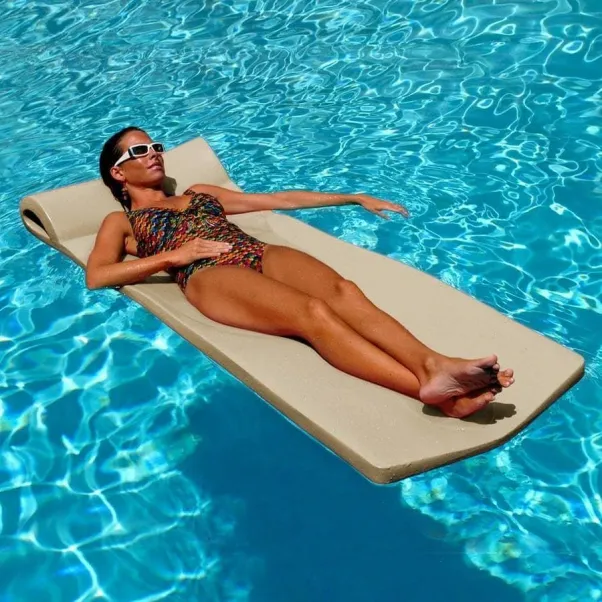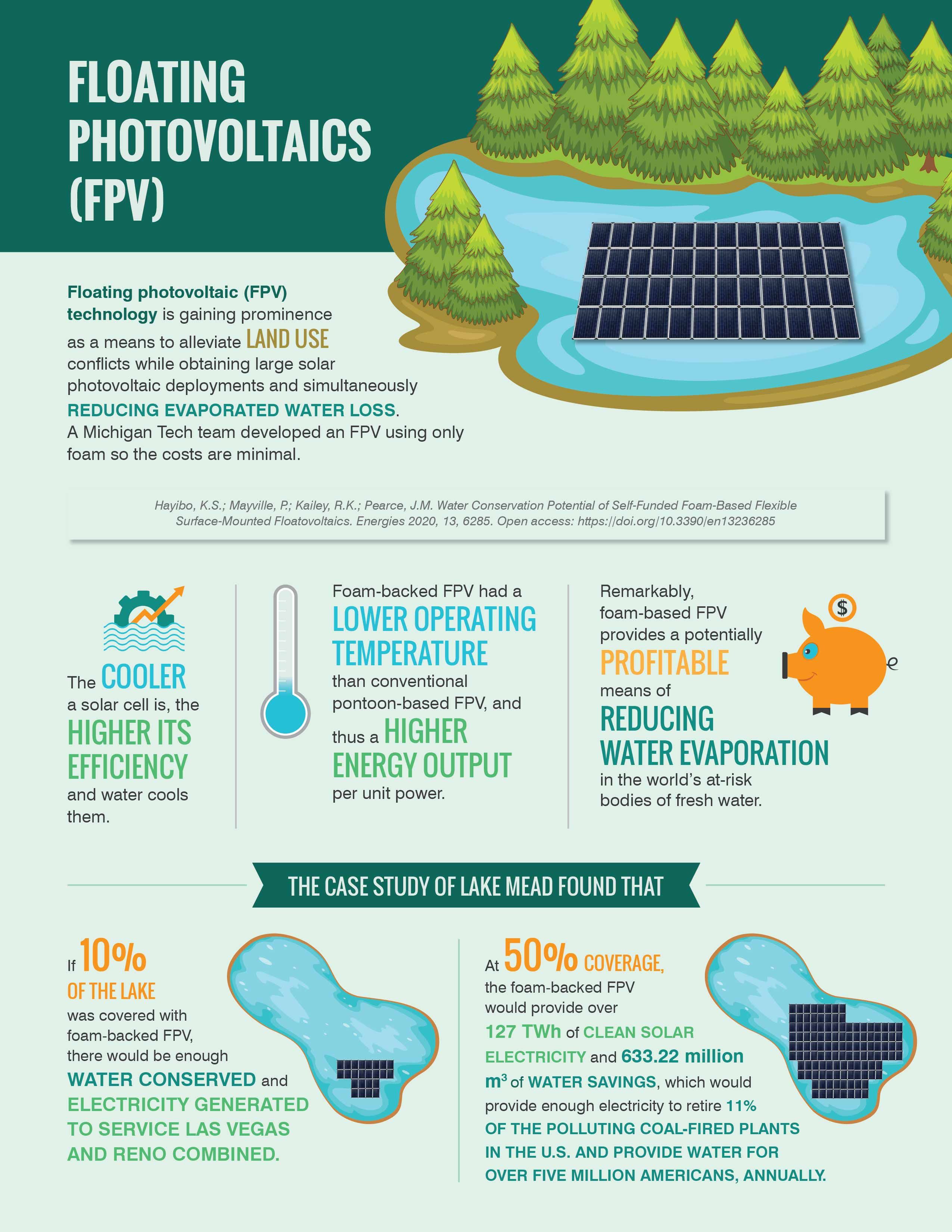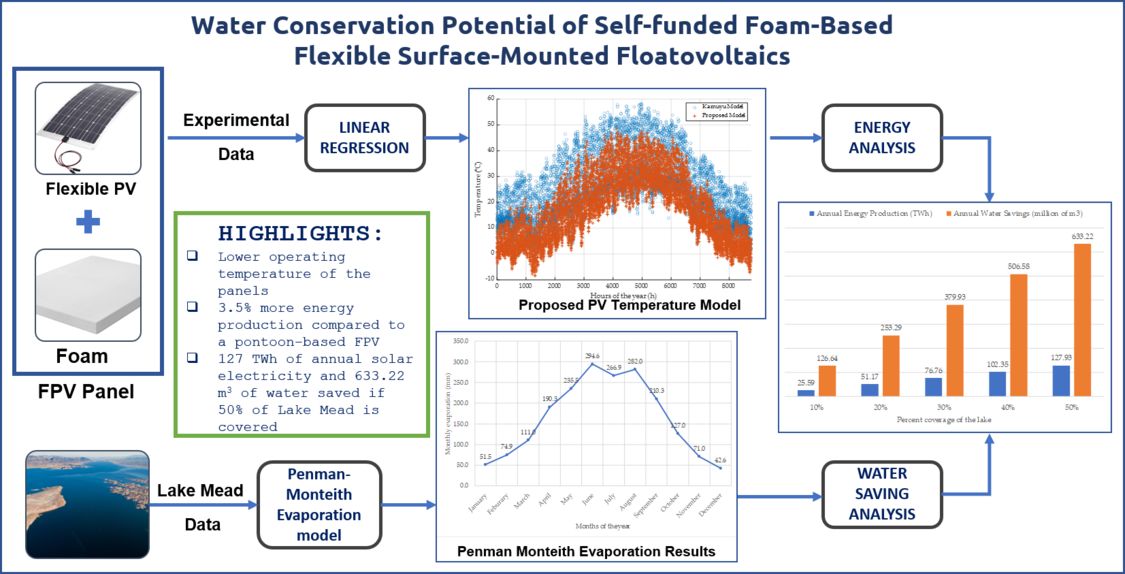How could pool floaties revolutionize the solar industry?

Sun worshipers that enjoy relaxing on pool mattresses may be on to something - two studies from Michigan’s Open Source Technology lab show the potential of a new type of floating photovoltaic (FPV) that uses foam like common pool toys. Foam-backed FPV cut the capital cost of solar, while enjoying both more electricity output and conserving water.
FPV helps eliminate land use conflicts fir large solar projects. By floating solar panels over water, solar systems not only preserve land for farming and nature, but also gain two advantages:
- the water cools the solar panels and they work better - outputting more electricity and
- covering water with solar panels reduces evaporation helping conserve water in arid regions.

This one-two-punch makes FPV one of the greenest energy technologies.
DIY FPV
In the first study, a DIY method shows consumers how to make their own FPV using only foam, water-proof adhesive and flexible solar modules. The systems were meant for seasonal cottage dwellers in the north that could deploy FPV during the summer to power their vacations and then roll them up like swimming pool covers to store in the winter. According to the study the technology is ready now. Engineering professor Joshua Pearce, director of the study and author of Create, Share, and Save Money Using Open-Source Projects said, “You do not have to wait for this technology. Anyone is free to use the designs now – even manufacturers – because the designs are fully open source. We used an open source method to accelerate innovation and availability of the solar technology for everyone.”
The FPV underwent indoor and outdoor tests for flotation, wave resistance, operating temperature and resistance to algae growth. Not only did the foam-backed PV work, the average operational temperature was reduced by 10–20 °C for the FPV compared to land-based mounting, which resulted in substantial increases in electricity output for any type of solar cell (between 2 and 10%).
In addition, Pearce said, “Foam-based FPV racking radically cut the capital cost when compared to either old-style raft-based FPV as well as conventional land-based racking.”
This makes foam-based FPV potentially the lowest cost solar energy systems available. This study showed that foam-based PV racking is so economic that it would even work for after-market consumer retrofits for small applications.
What about the potential for large scale solar energy systems?

In the second study, this new foam-backed FPV concept is investigated for flexible crystalline silicon-based solar (the most popular type of photovoltaic). Again it was tested experimentally for operating temperature and performance and was analyzed for water-savings using a complicated evaporation calculation.
Pearce said, “The foam-backed FPV had a lower operating temperature than conventional pontoon-based FPV, and thus a 3.5% higher energy output per unit power.” The study found that foam-based FPV provides a potentially profitable means of reducing water evaporation in the world’s at-risk bodies of fresh water. Pearce explains, “We did a case study of Lake Mead and found that if 10% of the lake was covered with foam-backed FPV, there would be enough water conserved and electricity generated to service Las Vegas and Reno combined.”
At 50% coverage, the foam-backed FPV would provide over 127 TWh of clean solar electricity and 633.22 million cubic meters of water savings. Pearce explains, “This is a lot of energy and water. It would provide enough electricity to retire 11% of the polluting coal-fired plants in the U.S. and provide water for over five million Americans, annually – with just one lake that would still be open for recreational use.”
“We already know roof-based and land-based solar photovoltaics are sustainable and economic. Solar is now often the lowest cost source of electricity throughout the world. Now, there is very strong evidence that FPV could even do better for both the economy and the environment”, concludes Pearce.
Read the full studies:
Pierce Mayville, Neha Vijay Patil and Joshua M. Pearce. Distributed manufacturing of after market flexible floating photovoltaic modules. Sustainable Energy Technologies and Assessments. 42, 2020, 100830.
Koami Soulemane Hayibo, Pierce Mayville, Ravneet Kaur Kailey and Joshua M. Pearce. Water Conservation Potential of Self-Funded Foam-Based Flexible Surface-Mounted Floatovoltaics. Energies 2020, 13, 6285.
Also read
